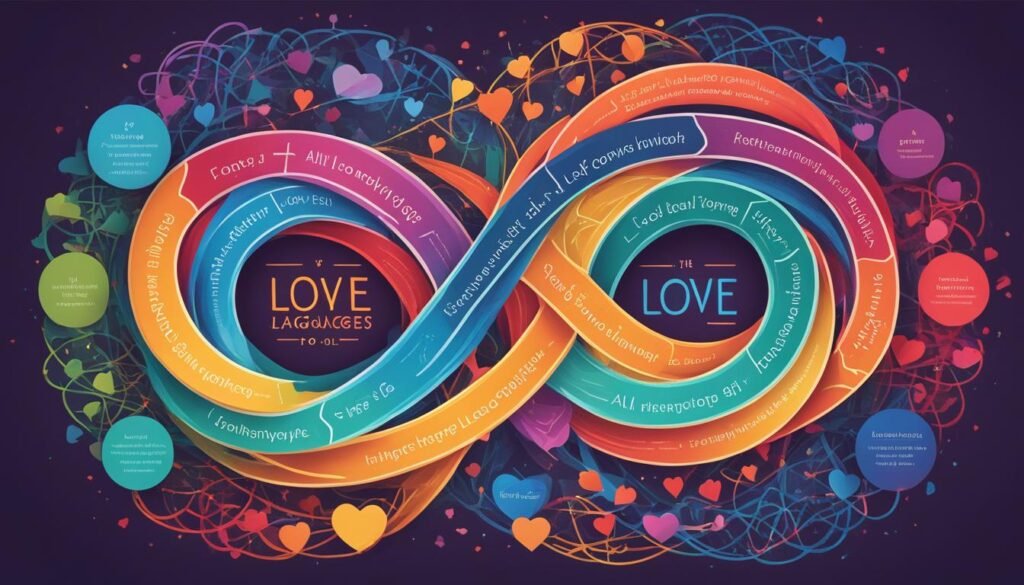Love is the cornerstone of a happy, fulfilling relationship, but did you know that everyone expresses and receives love differently? Understanding your partner’s love language can significantly enhance your relationship. But what does love language mean, and how can you understand it better?
A love language is a way of expressing and receiving love, and there are five significant love languages: acts of service, quality time, words of affirmation, physical touch, and receiving gifts. Each one can be a powerful way of demonstrating love to someone who prefers that specific language.
For example, if your partner values quality time above all other love languages, spending time with them, talking to them, and actively listening to them will make them feel valued and loved. However, if your partner’s primary love language is acts of service, taking care of their responsibilities, running errands, or doing household tasks without them having to ask for it will make them feel loved.
In this section, we will delve into the concept of love languages, provide a clear definition, explore why understanding love languages is important for enhancing relationships, and offer insights into various love languages that will enable you to better communicate with your partner and show them love in a way that resonates with them.
Key Takeaways:
- The concept of love languages is based on the idea that everyone expresses and receives love differently.
- The five major love languages are acts of service, quality time, words of affirmation, physical touch, and receiving gifts.
- Understanding your partner’s love language can lead to improved communication and deeper emotional connections.
- Catering to each other’s love languages can help build stronger bonds and nurture love.
- Taking a love language quiz can help identify your own love language and that of your partner.
Different Love Languages and Their Expressions
Love can be expressed in many ways, and knowing your partner’s love language can make a big difference in your relationship. There are five primary love languages that people use to express and receive love:
- Acts of Service: These are actions that show your partner you care, such as doing household chores or running errands for them. This love language is all about demonstrating your love through helpful, thoughtful acts.
- Quality Time: Spending time together is key for this love language. It’s not just about being in the same space; it’s about giving each other your full attention and engaging in activities you both enjoy.
- Words of Affirmation: Kind, supportive words can go a long way in showing love. This love language includes compliments, encouragement, and other verbal affirmations of affection.
- Physical Touch: For some people, touch is the primary way they express and receive love. This includes holding hands, hugging, cuddling, and other forms of physical contact.
- Receiving Gifts: This love language involves giving and receiving thoughtful gifts that show your partner you’re thinking of them. It’s not about the material value of the gift, but the sentiment behind it.
Understanding your partner’s love language can help you communicate your affection more effectively, leading to a stronger, more fulfilling relationship. It’s also important to note that everyone has a primary love language, but that doesn’t mean they don’t appreciate other forms of affection as well.

Examples of Love Languages in Action
| Love Language | Examples |
|---|---|
| Acts of Service |
|
| Quality Time |
|
| Words of Affirmation |
|
| Physical Touch |
|
| Receiving Gifts |
|
As you can see, there are many ways to express and receive love, and understanding your partner’s love language can help you show your affection in a way that feels meaningful to them.
Importance of Understanding and Expressing Love Languages
Understanding and expressing love languages is vital in any successful relationship. When it comes to love, we all differ in how we express and receive it. Some people prefer physical touch, while others favor words of affirmation or quality time. By understanding these love languages, couples can communicate better and avoid misinterpreting actions that are not in sync with their partner’s preferences.
Developing this understanding can lead to deeper emotional connections and more meaningful relationships. By catering to each other’s preferences, couples can create a stronger bond that fosters love and intimacy. It’s also important to note that love languages aren’t just for romantic relationships. Parent-child, friendship, and workplace relationships can all benefit from this understanding.
Being able to identify and express love in the way that resonates with our partner can drastically increase overall relationship satisfaction. It’s essential for partners to recognize that they may have different love languages and to actively work towards catering to each other’s preferences. This simple act can transform relationships and create a sense of emotional security and fulfillment.

The Benefits of Understanding Love Languages:
| Benefits | Description |
|---|---|
| Improved Communication | Understanding each other’s love languages can help avoid misunderstandings and improve communication. |
| Stronger Emotional Connection | Catering to each other’s love languages can create a deeper emotional connection and foster intimacy. |
| Increased Relationship Satisfaction | Expressing and receiving love in the right way can enhance overall relationship satisfaction. |
| Better Conflict Resolution | When couples recognize each other’s love languages, they are better equipped to overcome conflicts and navigate challenges. |
“When both partners are willing to understand and express each other’s love language, it creates a relationship built on intentional love and mutual respect.”
In order to reap the benefits of understanding love languages, it is essential for couples to communicate openly and often. Taking a love language quiz can also be a valuable tool for identifying each other’s preferences and setting a solid foundation for a successful relationship.
Conclusion
In conclusion, understanding and expressing love languages are crucial for building strong and healthy relationships. By recognizing and catering to each other’s love languages, couples can form deeper emotional connections and improve communication, leading to overall relationship satisfaction.
To identify your own love language and that of your partner, we highly recommend taking the Love Language Quiz. This quiz provides insight into how you express and receive love, making it easier for you to communicate your needs to your partner and vice versa.
Embracing and actively expressing love in the language that resonates with you and your partner can lead to harmonious and fulfilling relationships, where both individuals feel appreciated and loved in ways that are meaningful to them.
FAQ
What does love language mean?
Love language refers to the way individuals prefer to express and receive love. It encompasses the specific actions, behaviors, or gestures that make someone feel loved and appreciated in a relationship.
What is the definition of love language?
The love language concept was developed by Dr. Gary Chapman, who identified five primary love languages: acts of service, quality time, words of affirmation, physical touch, and receiving gifts. Each person has a primary love language that resonates with them the most.
Why is understanding love languages important?
Understanding love languages is crucial for enhancing relationships. It allows individuals to communicate love and affection in a way that their partner can truly appreciate and feel. It can lead to deeper emotional connections and a more fulfilling relationship.
What are the different love languages and their expressions?
The five love languages and their expressions are as follows:
– Acts of service: Performing thoughtful or helpful tasks for your partner.
– Quality time: Spending undivided, meaningful time together.
– Words of affirmation: Expressing verbal appreciation, compliments, or encouragement.
– Physical touch: Affectionate actions such as hugging, holding hands, or cuddling.
– Receiving gifts: Giving tangible symbols of love and thoughtfulness.
Why is it important to understand and express love languages?
Understanding and expressing love languages is essential for cultivating healthy and fulfilling relationships. By catering to your partner’s love language and expressing love in a way they understand, you can create a deeper emotional connection and strengthen your bond.
How can understanding love languages improve relationships?
Understanding love languages helps improve relationships by enhancing communication between partners. It allows individuals to effectively express their love and ensures their efforts are received and appreciated. It also fosters mutual understanding and appreciation, minimizing misunderstandings and conflicts.
What is the significance of taking a love language quiz?
Taking a love language quiz helps individuals identify their own primary love language and that of their partner. It provides valuable insights into how each person prefers to give and receive love, allowing them to adapt their behaviors and actions accordingly. This understanding can lead to a more harmonious and loving relationship.

